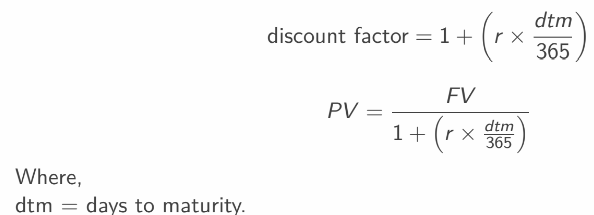Lecture 3 Financial Mathmatics 2
Note on Interest Rates and Cash Flow Analysis
Page 4: Finding the Rate
Determining Interest Rates
Necessary for evaluating future cash flows.
Important for:
Return on investment.
Interest rate on loans.
Single Cash Flow/Perpetuity Evaluation
Rearranging PV or FV equations to solve for r:
Formula: ( r = \left( \frac{FV_n}{PV} \right)^{\frac{1}{n}} - 1 )
Cash Flow Streams (Annuities)
Use Excel or financial calculators for precise values.
Trial and error for rough estimations.
Page 5: Example Problem
Investment Scenario
Invested: $863.75 today.
Future Value: $1,000 in 5 years.
Calculation
Rearranged formula: ( 863.75 = \frac{1000}{(1 + r)^5} )
Result: Rate of return is 2.97%.
Page 6: Finding the Number of Periods (n)
Rearranging Equations
Formula: ( n = \frac{\ln(FV/PV)}{\ln(1 + r)} )
Example Problem
Car purchase: $20,000 needed.
Current investment: $15,000 at 10% per year.
Calculate time to reach $20,000.
Page 7: Finding Cash Flow - Loan Example
Loan Structure
Principal: Amount borrowed.
Repayments include principal and interest.
Amortization table used to track payments.
Principal Owing
Present value of loan repayment cash flows.
Page 8: Loan Problem
Car Purchase Loan
Amount: $10,000 for 5 years at 5% interest.
Questions to Consider
Annual payment amount.
Principal paid in year 4.
Interest paid in year 4.
Amortization table creation.
Page 9: Loan Solutions
Annual Payment Calculation
Formula: ( PV = C \left( \frac{1 - (1 + r)^{-N}}{r} \right) )
Result: Annual payment is $2,309.75.
Principal Paid in Year 4
Calculation: Principal paid = $2,095.01.
Interest Payment in Year 4
Interest = $214.74.
Amortization Table
Detailed breakdown of payments over 5 years.
Page 12: Summary So Far
Understanding PV and FV Calculations
Rearranging Formulas for Missing Variables
Considerations for Real-Life Applications
Loan/mortgage payment frequencies.
Interest rate quotations.
Page 13: Future Value and Compounding
Compounding Mechanics
Interest earned on principal and previously earned interest.
Simple vs. Compound Interest
Simple interest: Interest on principal only.
Compound interest: Includes interest on interest.
Page 14: Example Problem - Compound Interest
Investment Scenario
$100 at 10% for 5 years.
Calculations
Compound FV: $161.05.
Simple Interest: $50.
Interest on interest: $11.05.
Page 16: Simple Interest for Less Than a Year
Calculation Method
Discount factor:

Page 17: Compounding Frequency Impact
Continuous Compounding
Formula: ( FV_{\infty} = PV \times e^{r \times n} ).
Page 21: Different Types of Rates
Annual Percentage Rate (APR)
Simple interest earned in one year.
Effective Annual Rate (EAR)
Total interest earned including compounding.
Equivalent n-Periodic Rate (r)
Discount rate for adjusting cash flows.
Page 22: APR Details
APR Characteristics
Nominal interest rate, does not account for compounding.
Required disclosure on loans and savings.
Page 24: Effective Annual Rate (EAR)
Conversion from APR
Formula: ( 1 + EAR = \left(1 + \frac{APR}{m}\right)^m ).
Page 26: Compounding Effect
Comparison of Compounding Intervals
Higher frequency leads to higher EAR.
Page 28: EAR to Periodic Discount Rate
Conversion for Non-Annual Cash Flows
Formula: ( r_{per period} = (1 + EAR)^{\frac{1}{n}} - 1 ).
Page 32: APR to Discount Rate
Conversion Steps
Convert APR to EAR.
Convert EAR to r for cash flow frequency.
Page 36: Nominal vs. Real Interest Rate
Definitions
Nominal: Before inflation.
Real: Adjusted for inflation.
Fisher Equation: ( 1 + r_{nominal} = (1 + r_{inflation})(1 + r_{real})